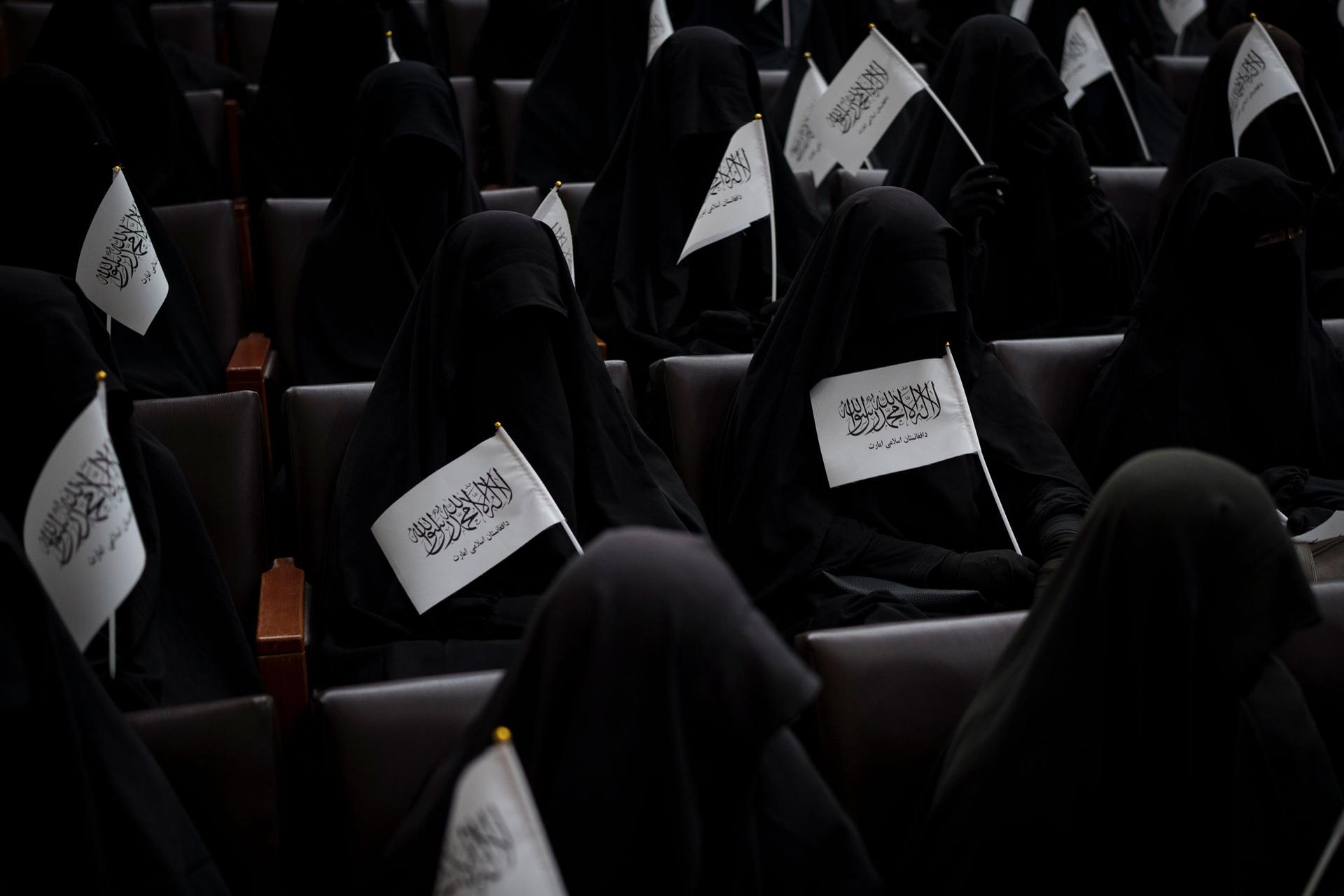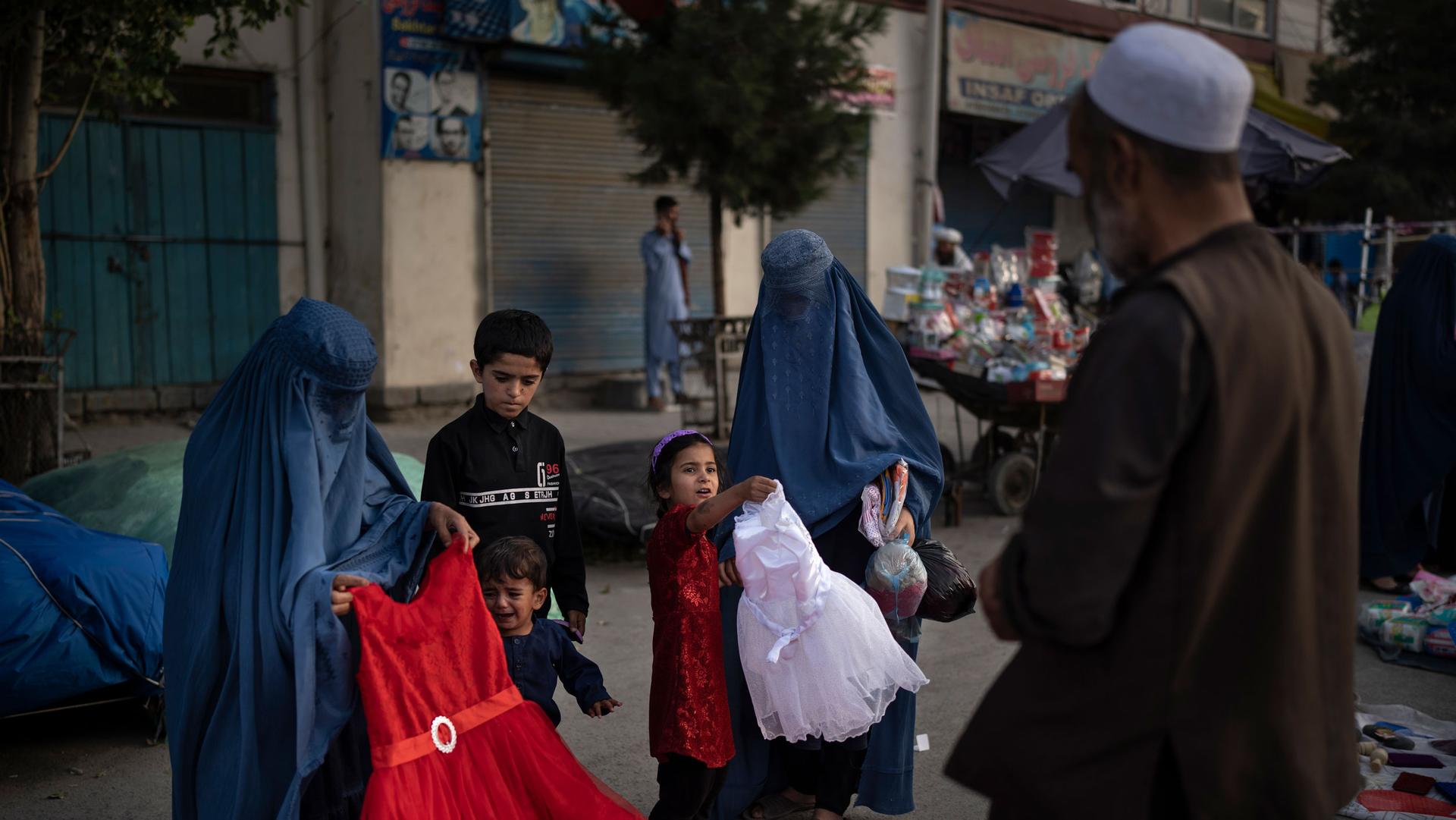Images from Kabul this weekend showed women in black marching in pro-Taliban demonstrations. The women wore long, dark outfits, and their faces were nearly fully veiled.
Recently, the Taliban issued a decree calling for female university students to wear clothing that covers their bodies and most of their faces. Taliban leaders say it’s a return to Afghan tradition in the predominantly Muslim country.
Related: ‘Islamic Emirate of Afghanistan’ is based on specific ideology
Bahar Jalali, a former history professor at the American University in Afghanistan, disagrees. Over the weekend, she launched an online campaign called #DoNotTouchMyClothes to publicize what she considers to be traditional Afghan dress.
Related: Afghanistan: Two decades of war and daily life in photos
It all started on Saturday when Jalali saw those images from the pro-Taliban protests by women.
“I was just really shocked to see that something that is completely and utterly foreign to Afghan culture was being presented as authentic Afghan attire. … Even in the most remote conservative villages of Afghanistan, you will not see that kind of attire.”

“I was just really shocked to see that something that is completely and utterly foreign to Afghan culture was being presented as authentic Afghan attire,” Jalali told The World. “Even in the most remote conservative villages of Afghanistan, you will not see that kind of attire.”
That day, Jalali uploaded a picture of herself in a traditional Afghan dress onto Twitter.
Related: ‘We are afraid’: An Afghan women’s rights activist is left behind
When Jalali woke up the next day, it had gone viral.
Waslat Hasrat-Nazimi, head of Afghan Service at Deutche Welle, also tweeted:
Mohammed Agha Ibrahimkhail also tweeted an image of rural Afghan women wearing colorful, lively dresses.
And Malalai Habibi tweeted in support that she and her partner’s attire in the photo reflects Afghanistan’s “colorful and diverse culture.”
Jalali explained how traditional dress for women in Afghanistan includes colorful dresses with a lot of embellishments and embroidery reflecting different styles from various regions.
“And of course, a lot of these dresses are meant for women to dance in them, you know, to be alive and to be animated. It’s really the polar opposite of what we saw at the pro-Taliban women’s event, where you see women completely invisible. It’s like they’re not there.”
“And of course, a lot of these dresses are meant for women to dance in them, you know, to be alive and to be animated. It’s really the polar opposite of what we saw at the pro-Taliban women’s event, where you see women completely invisible. It’s like they’re not there. It just looked very strange to me, very contrived,” she said.
Before the Taliban came to power, most Afghan women wore different headscarf styles ranging from loose to tight around the head and body. Now, she said, all women are expected to wear a tight veil with enveloping cloaks.
“That looks more like what a judge in the United States wears, something that’s very completely shapeless. And you really no longer can have this diversity of headscarves. It has to be a really tight headscarf that covers a complete head — no hair showing — before you could show hair, it was not a big deal.”
Jalali said women now fear the consequences of veering from Taliban dress codes. Under Taliban rule in the 1990s, women were sometimes beaten or even executed for even minor dress-code violations.
Dress is a powerful symbol of national identity, Jalali said.
The viral campaign is Jalali’s attempt to showcase the true face of Afghanistan — colorful, vibrant and alive. She said the dress code imposed on Afghans by the Taliban “seeks to erase women from society and seeks to erase Afghan culture.”
She added: “We are facing an assault on our identity, our sovereignty, our culture, our heritage.”
Our coverage reaches millions each week, but only a small fraction of listeners contribute to sustain our program. We still need 224 more people to donate $100 or $10/monthly to unlock our $67,000 match. Will you help us get there today?
